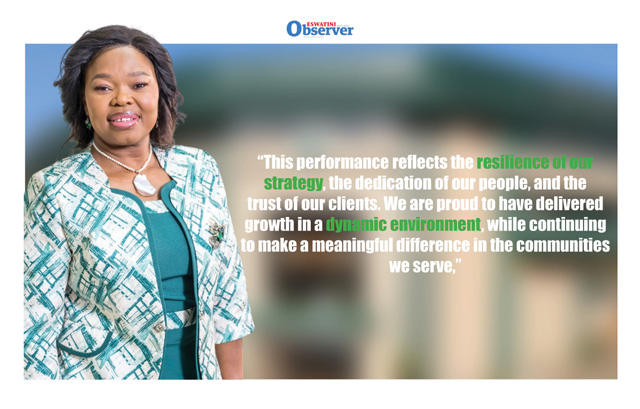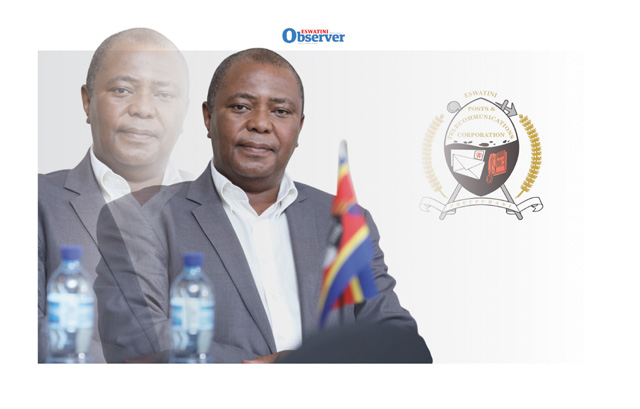By Joy Ndwandwe | 2019-12-15

This week Incwala third phase on indigenous sacredness, beginning with collection of Lusekwane, Timbondvo, catching of bull, main Incwala Rain dance day and burning of the log.
The King leading tingatja, young male regiment to collect the sacred element of Incwala, Lusekwane, which is to stay fresh throughout the pilgrimage indicating purity of young males. This is critical in ensuring the King leads a nation embodying moral preservation of young males, the laws of self-preservation applies within all genders, as in August/September we celebrated young maidens and now it’s time for the young males.
The role of young males in self-preservation is critical, as research indicates that school drop out is also due to peers impregnating each other. Thus, begging for gender inclusivity to be the focus of self-preservation as the young males are also vulnerable to early sexual debut as their peers, the young maidens.
Therefore, ignoring the young males and focusing on young maidens is costing this country in terms of future human capital, as high school drop outs are occurring in both males and female learners. Indigenous knowledge of self-preservation must not only be celebrated during Umhlanga and Incwala, but must be integrated within education, religion and daily modern lifestyle.
Spiral Transformative
The King as head of indigenous knowledge this week engaged in what the North Americans indigenous people call the spiral transformation. The Pueblo Society Transformation Model on experiential learning on conducting a journey to the edge of the world by Jojola (2004). This year’s Incwala transformation journey by the King, began at Ludzidzini Royal Residence, followed by Ngabezweni, Mbangweni, and finally at Buhleni, where he commissioned tingatja. Buhleni, KaHhohho, sacred origins respected as kaboMswati III, thus, creating a firm base for ending his spiral transformation.
Thus, returns to origins, after an experiential journey, indicating that throughout this journey the King has been a source of unity beaming sunray’s on the nation.
Therefore, from Buhleni, the King is ready to lead the young male regiment on their experiential learning, as collective minds with the purpose of exposing their moral leadership.
These regiments come from all corners of this kingdom to express their purity when joining pilgrimage to collect the sacred element, Lusekwane. This becomes an important spiral transformation migration process from their experiential learning, they converge at Ngabezweni Royal Residence ready for Incwala sacred pilgrimage.
These regiments are commissioned to learn about themselves, their endurance during this transformative pilgrimage lasting almost 24 hours, as collective minds. This becomes an important source of learning, about their whole year of self-preservation, and how this sacred pilgrimage manifest into a high level of consciousness.
Transformation models are rooted within indigenous knowledge, through humbling and not humiliating moments, where the sacred Lusekwane becomes a barometer of the young regiment’s sexual behaviour throughout the year.
This sacred pilgrimage is tested when tingatja return to origins at Sibaya the next day, and dance with their Lusekwane, in the presence of the king, royal family and gender inclusive regiments. Thus, proving to the nation that they preserved themselves throughout the year, hence, sacred element, Lusekwane is ever green, like the Christmas tree, in the morning.
Thus, regiments are elevated to high level of consciousness as they embarked on an experiential journey from when they departed from their homestead, to Ludzidzini, Ngabezweni, to Esikhaleni and back to Ludzidzini. The morning moment becomes a major source of walking the talk on self-preservation, those who’s Lusekwane was not fresh in the morning, are not allowed to experiences the hero’s welcome inside Sibaya.
Sacred Spaces and Elements
The hive of Incwala activity is centred on sacred spaces and elements, indigenous sacredness, which should continue to escape the scientific laboratory to preserve and maintain its sacredness. Lusekwane, sacred element, used to cover the Incwala sacred space, inhlambelo, the kraal within the kraal. The most sacred space within this public and yet private ceremony, as sacred spaces are for the spiritual cleaning and healing the King.
This sacred space, inhlambelo, has so many theories about its wickedness, witchcraft and sexual violation, such that in my feminist days, I had wished to enter this space. However, now that I am an advocate of feminine power, I call out all those who project their negativity on inhlambelo, they must get-over their egos and stop negating indigenous sacredness. In essences, whatever occurs within inhlambelo, is none of our business but sole business of those who are active participants within this sacred space.
Imbondvo, sacred element, young male regiments, tingatja, collect the morning before catching the bull is used to cover the sacred space, inhlambelo.
Sacred spaces are by design created to ensure harmony within the king and the nation, hence, they are preserved as sacred, protected with natural elements.
All sacred elements used within this sacred space, inhlambelo, are a manifestation of our sacred covenant with nature and the creator, and most significantly ecological ethics. It is important that sacred space, Inhlambelo, healing paradigms restores peace within the king and nation, this is a historical ritual and ceremony that not only brings rain but peace.
Hence, the sacred elements from Lusekwane, Imbondvo, catching of the bull are led by regiments of peace not war, all those who have been on the journey of self-preservation throughout the year.
Thus, the sacred elements brought into this sacred space, Inhlambelo, manifest healing and cleansing between the human and natural world. The King as head of indigenous knowledge is healed and cleansed in sacred space, using sacred elements the embodiment of human and animal relations.
These sacred elements are embedded within the Incwala songs, such as Inqaba Kanqofula, this preservation of sacredness between human, animals and nature, as all elements are sacred and healing. The sacred elements from the water party and young regiments evoke the transcendental powers of the King, such that the King can connect the nation in living with harmony with nature. This indigenous sacredness rooted within the context of life seeking life, manifesting through sacred spaces and elements on life and divinity on land qualities of rain dance for growing maize.
Conclusion
In conclusion, indigenous sacredness heals and cleanses the King and nation, as Incwala ceremony is about that great cosmic feed for health and prosperity.
This occurs within sacred spaces for spiritual practices such as Inhlambelo, which in my view must be understood by those bound by genealogical protocols and not lunatics like myself. Evidently, have problems managing their egos when the edge to tell the world, about Inhlambelo emerges in a chaotic moment.
I certainly do not wish to be entrusted with the intricacies of Inhlambelo, as it would be too much responsibility for my chaotic mind to preserve the sacredness.
Hence, my role is preserving the academic essence of Incwala, without first-hand knowledge into Inhlambelo, as it would evoke my ego of wishing to tell the world what I know.
Moreover, all sacred spaces and elements are for the King as head of indigenous knowledge, thus, in my view he remains the sole custodians of this sacred space, Inhlambelo. Until and unless the King wishes to share the details we should all silence our egos.
Let us join the king is the burning the log, with all the sacred elements from sacred space, as this is our collective responsibility. As the burning the log end third phases, marking the beginning of forth phase on indigenous governance during kuhlakula, regiments in maize fields.
share story
Post Your Comments Below

NEDBANK Eswatini has reported a strong financial performance for the year ended December 31, 2024...

LAST week’s selection of a seven-member committee to investigate the Eswatini Posts and Tel...
How to Support Child’s Mental Health
- Create a safe and supportive e...

Zee Nxumalo, a multi-platinum singer and songwriter, is set perform at the MTN Bushfire Firefly g...
All material © Swazi Observer. Material may not be published or reproduced in any form without prior written permission.
Design by Real Image Internet